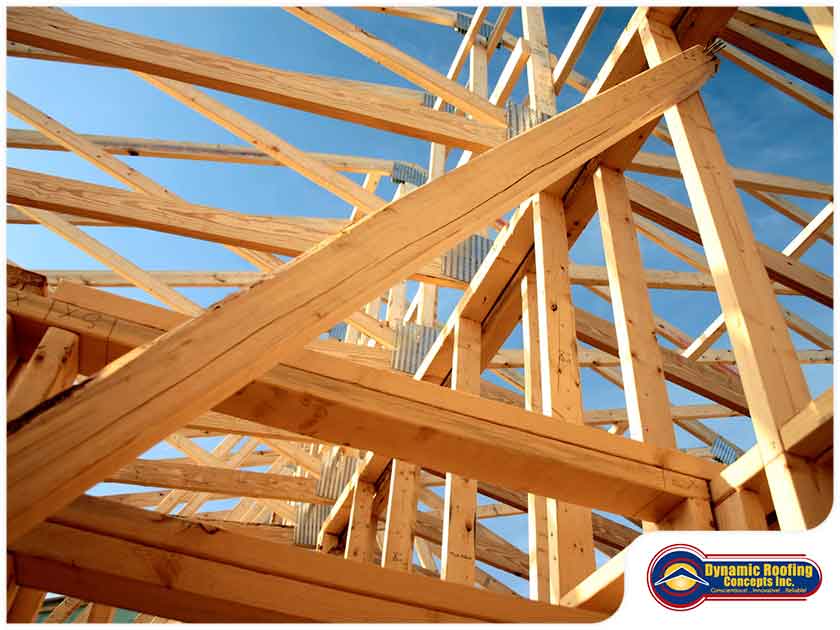

The more you know about roofing terms, the smarter your home design choices will be. Roof trusses have overtaken rafters as the most popular way to create a roof frame. And there’s a good reason why trusses have become more popular – they’re cheaper, more convenient and extremely versatile.
In this article, professional shingle roof contractor, Dynamic Roofing Concepts Inc. breaks down what exactly roof trusses are and explains some of the most common types used in order to help you get insight into what kind of roof trusses you may want to use for your roof construction project.
In structural engineering, the word “truss” describes a triangular design. Essentially, roof trusses create a roof’s frame. They determine the shape of the roof and ceiling while providing support for the roof. Trusses are pre-engineered in a factory using lightweight materials, like 2?4s and are shipped to the construction site. Trusses consist of three main parts:
You will find them supporting the roofs of auditoriums, cinema halls, stadiums, railways, stations, airports and others.
Roof trusses have stood the test of time in construction because of the number of structural benefits they provide to homes and buildings. A roof truss is considered the most important key component in an engineering system in a building. They serve a critical function and design depends on various factors. Without roofs, buildings would be exposed to all kinds of elements, rendering them completely useless.
We’ve listed out 10 of the most common roof trusses, but there are many more types on the market. From tile roofing to asphalt shingles, to vaulted ceilings and flat roofs, there is likely a truss that can help you get the job done. Roof trusses are versatile, cost-effective and convenient. Working with an experienced architect or structural engineer is the best way to guarantee that you’ll find the right trusses for your home and meet your building code requirements.
Dynamic Roofing Concepts Inc. is a leading Florida roofing company with an established reputation for quality, dependability, workmanship and professionalism. As a GAF Master Elite®-certified contractor, we specialize in several different types of roofs, so don’t hesitate to get in touch with us for inspection, repair, installation or maintenance work.
To contact us for a free estimate with no obligation on a new roof or repair, call (813) 510-1166 or fill out our online request form. We serve clients in Tampa, FL.

Dynamic Roofing Concepts Inc. is a family owned and operated company that offers affordable and high quality roofing.
Dynamic Roofing Concepts Inc.
416 E Windhorst Road Brandon, FL 33510